Written by
Wilsey YoungSummary: This article primarily discusses unnecessary files on Windows 10/11, such as temporary files, thumbnails, page files, Windows.old, and other hidden or protected system files. -From m3datarecovery.com
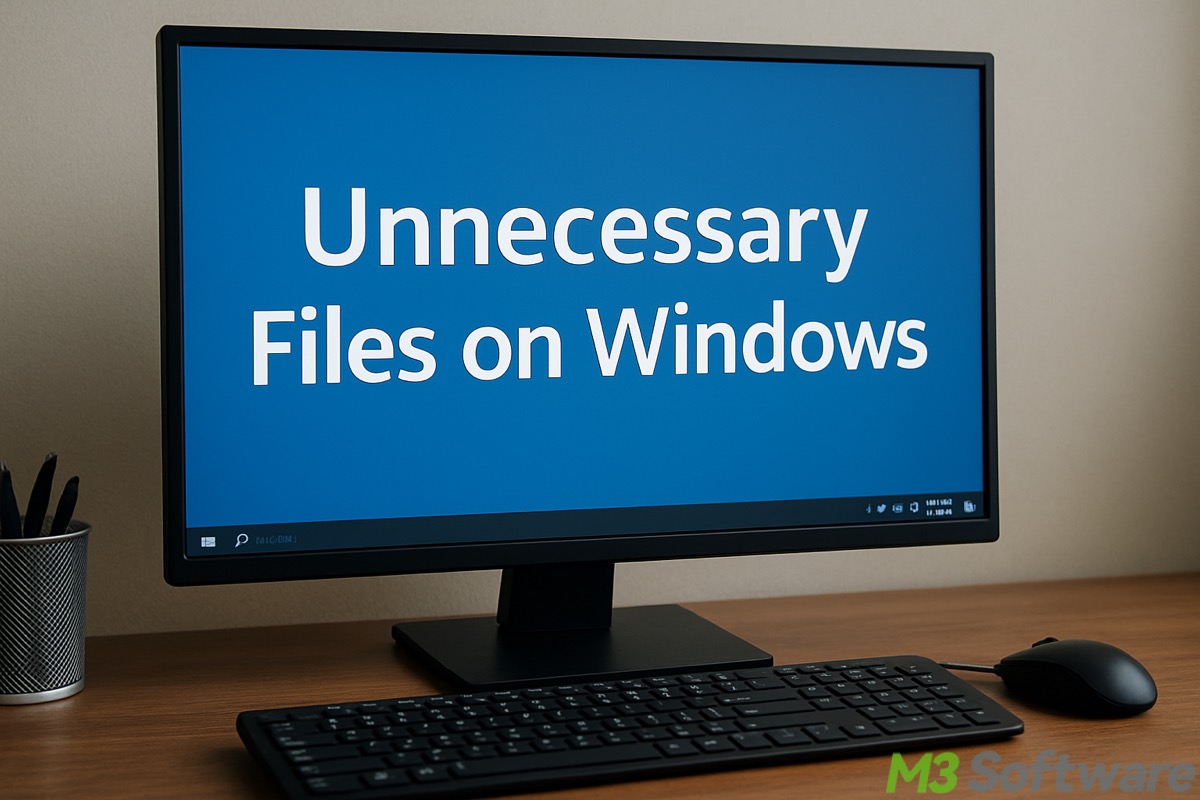
What takes up the disk space on a Windows PC? Are there unnecessary files we are unaware of? These are the questions that typically come to our minds when the Windows PC is running out of disk space.
This article lists some unnecessary files that many Windows users may hardly notice. We'll talk about what they are and whether we can delete them to vacate the space. To delete junk files in Windows, please refer to: How to Delete Junk Files in Windows 11/10? (8 Methods)
Unnecessary files on Windows 10/11
Here are some system files that often accumulate behind the scenes, and they are typically hidden or protected by Windows, so we can be unaware of their existence. You may be interested in how to delete Windows update files.
Temporary files - Unnecessary files on Windows 10/11
Temporary files in Windows are created by the Windows operating system or various apps to store data temporarily while running tasks like running programs, software, or performing system updates.
Temporary files are typically stored in folders such as Temp or with extensions like .tmp. These files help improve performance, preserve work progress, and handle intermediate data during operations.
However, if they are not deleted automatically, they can accumulate over time and occupy considerable storage space. Many temporary files are redundant after serving their purpose, so deleting unnecessary temporary files regularly is viable. 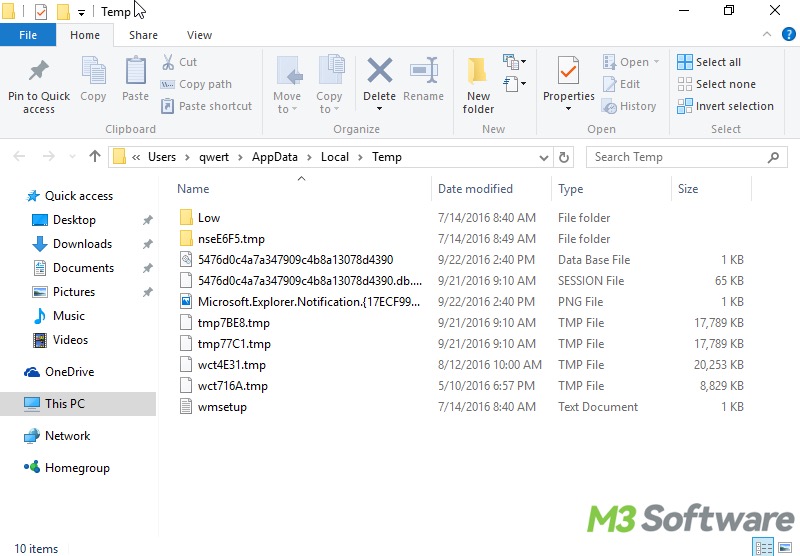
To delete Temporary Files on Windows 10/11, please refer to: Windows Temporary Files: Overview & Best Ways to Delete Them
You can share this post by clicking the following buttons
Page files - Unnecessary files on Windows 10/11
Pagefile.sys (aka paging file or page file) is a Windows system file that acts as extra virtual memory when your physical RAM runs out of space. It helps store the inactive data temporarily so active programs have more space to run smoothly.
Since Pagefile.sys is stored on your hard drive or SSD, both slower than RAM, using it too often can slow down your PC. With enough RAM, Windows rarely uses it, but if RAM is insufficient, frequent reading and writing to Pagefile.sys can slow down the system considerably. 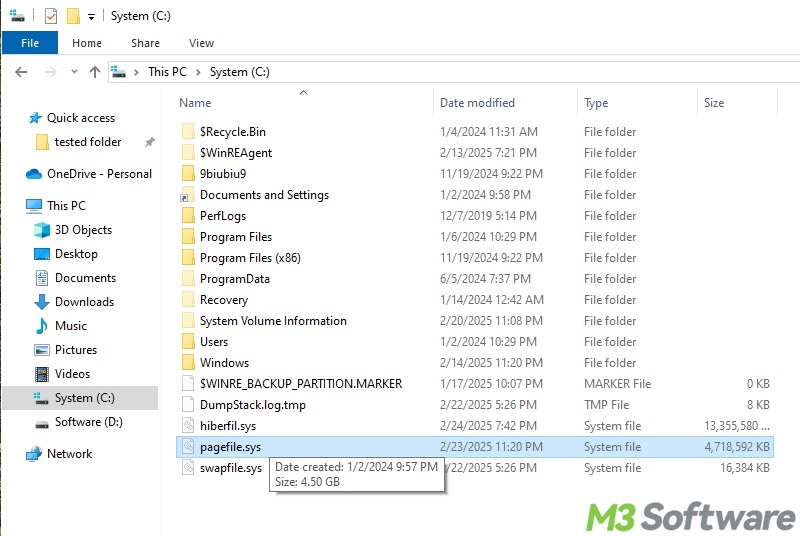
Technically, you can't delete Pagefile.sys, and turning it off isn't advisable because it can cause system crashes or instability. So, if it's taking up a lot of space, you can set a custom Pagefile.sys file size. Here's how: What Is Pagefile.sys File & Can We Delete It on Windows?
Windows.edb - Unnecessary files on Windows 10/11
When you need to find a specific file on your Windows PC, you probably open File Explorer, type the file name in the search bar, and see how it responds. This indicates that the system is quickly pulling information to provide instant search results.
The Windows.edb file is a database used by the Windows Search service. It stores an index of your computer's contents, including file names, file contents, and metadata. Over time, as more index data is collected and stored, this file can grow significantly in size. The more files and folders your computer contains, the larger the Windows.edb file will become. 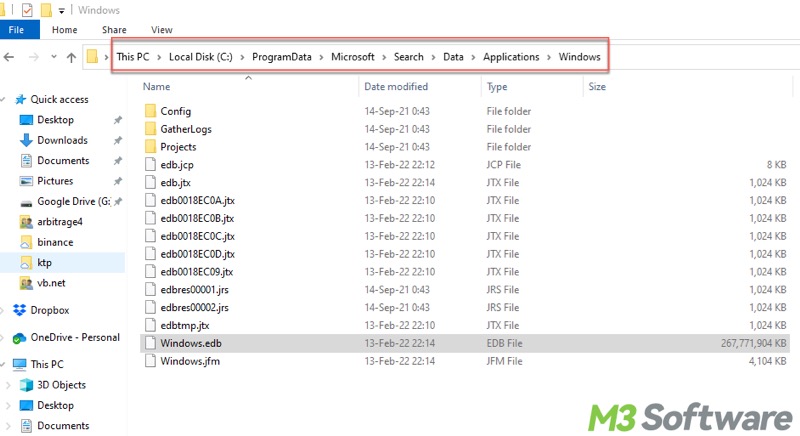
You can delete the Windows.edb file to free up the disk space, but there are some matters needing attention. Please refer to: Windows.edb File: What Is It & Can We Delete It?
Thumbnail cache - Unnecessary files on Windows 10/11
When you browse through your files and folders in Windows, you'll often see each file, especially images and videos, represented by a small preview image. This provides a quick visual snapshot of the file's contents, saving you the trouble of opening it.
These preview images, known as thumbnails, are stored in a special system called the “Thumbnail Cache.” Rather than recreating these thumbnails every time you open a folder, Windows saves them in this cache. This allows files and folders to load their previews more quickly the next time you browse, resulting in a faster user experience. 
To clear or disable thumbnail cache on Windows: Windows Thumbnail Cache: What Is It & How to Manage It?
Windows.old - Unnecessary files on Windows 10/11
When Microsoft releases a new Windows update, many Windows users install it right away. However, some may later want to roll back to an earlier Windows version due to various reasons like bugs, compatibility, system instability, or more. In such cases, the Windows.old folder becomes important.
The Windows.old folder is created during Windows upgrades or reinstallations. It stores files from the previous Windows installation, enabling users to revert to the earlier version of Windows. This process restores system files, user settings, installed programs, and personal data to their previous state. 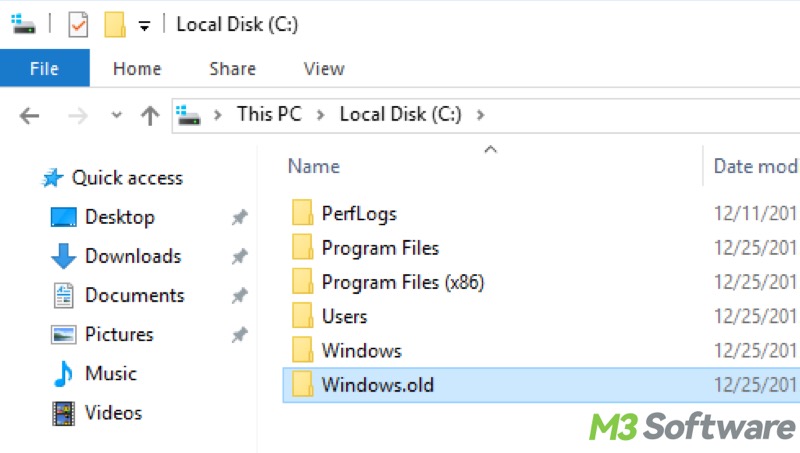
Think carefully before removing the Windows.old folder! Please refer to: Windows.old Folder: What Is It & Can We Delete It?
System restore points - Unnecessary files on Windows 10/11
Windows provides a built-in feature called System Restore that allows you revert system files, applications, and settings to an earlier working state. This can be useful if your system encounters errors or other issues.
The system restore points, snapshots of your system's condition, can occupy considerable disk space, depending on the amount of storage allocated to System Restore by the user. 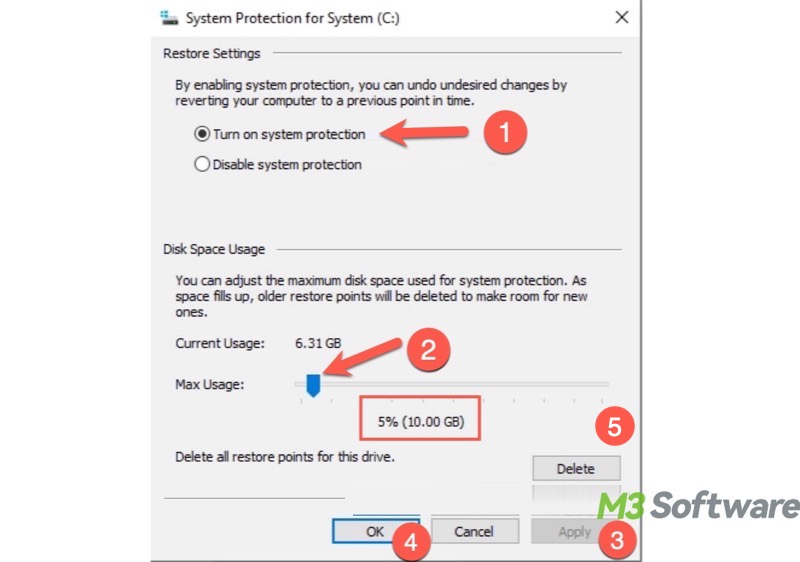
Do you want to delete the system restore points? Please refer to: Low Disk Space but Nothing to Delete: Causes & 7 Solutions!
How to clean unnecessary files on Windows? Also read:
FAQs about unnecessary files on Windows 10
Share the post with your friends by clicking the buttons below
The Windows operating system and applications create files to store information temporarily during or after tasks. Sometimes these files tend to grow larger and larger over time, as they aren’t deleted automatically.
Generally speaking, these unnecessary files won't harm your Windows PC, but they may take up significant hard disk space and can slow down your Windows PC over time.
Disk Cleanup is a built-in tool on Windows that can help you remove some unnecessary files on Windows, such as thumbnails, temporary files, Recycle Bin files, etc. A specialized tool is highly recommended. iBoysoft DiskGeeker for Windows is a professional and intuitive disk management tool that contains practical features to analyze and optimize disk space usage on a Windows PC.
